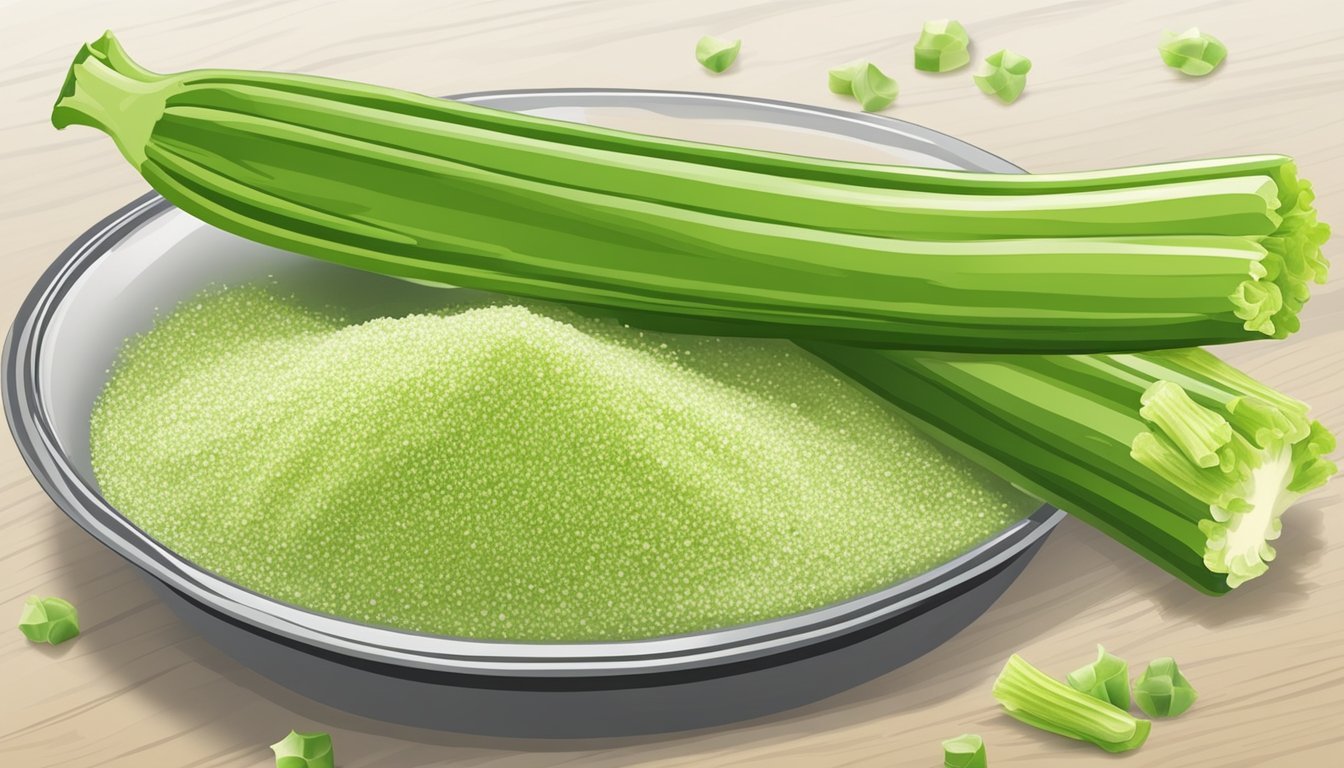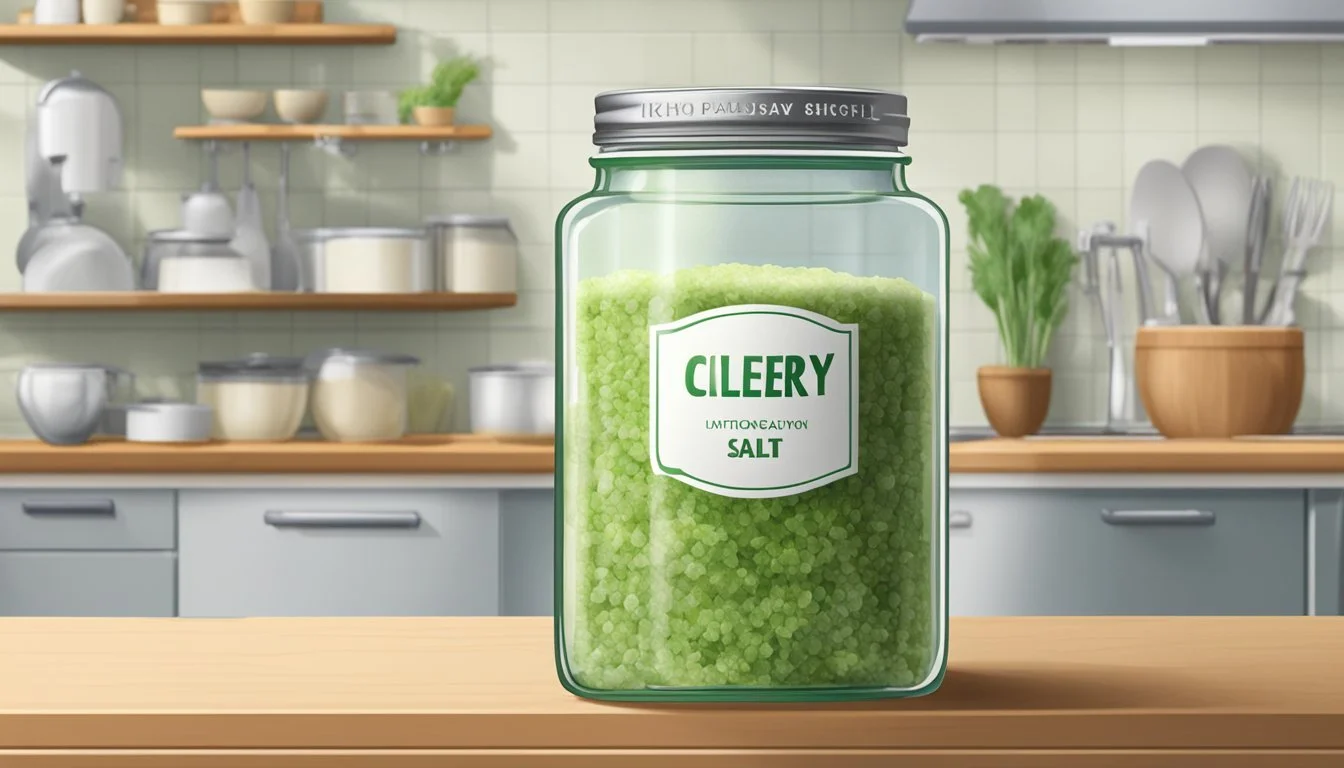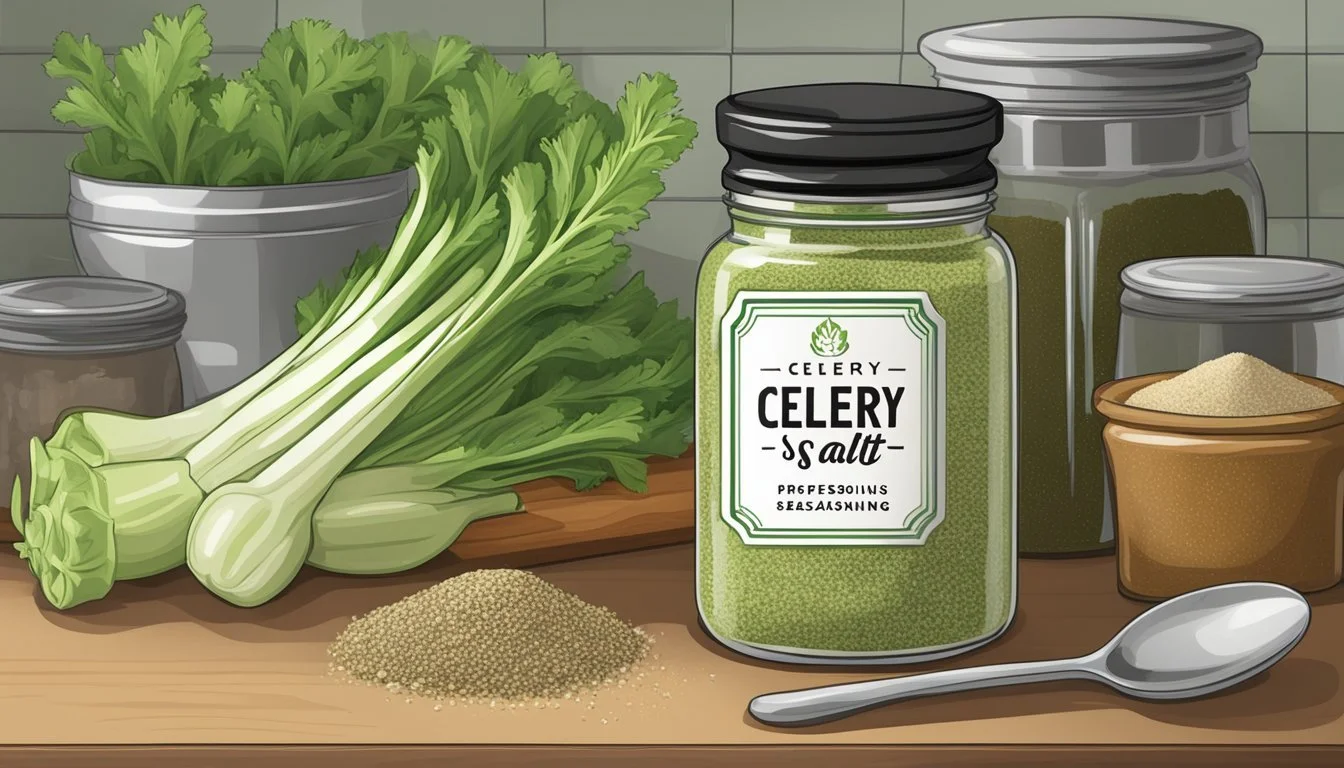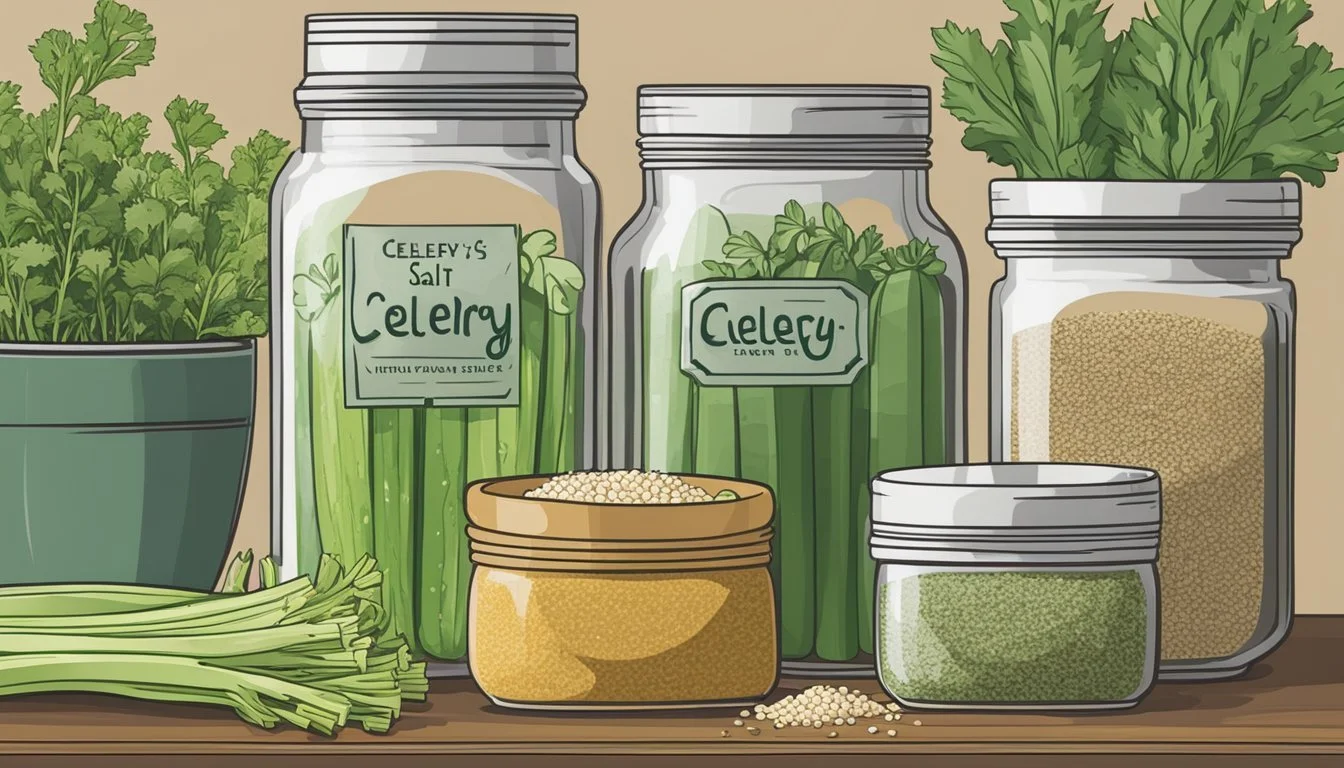How Long Does Celery Salt Last?
Understanding Shelf Life and Storage Tips
Celery salt, a seasoning blend made from ground celery seeds (how long do celery seeds last?) and salt, is a dynamic ingredient often used to enhance the flavor profile of various dishes. Its versatility makes it a handy addition to kitchens, appearing in a host of recipes ranging from savory to sometimes sweet. This seasoning is not just limited to culinary uses but also contributes to the signature taste of certain cocktails like the Bloody Mary. Like other spices, celery salt has a shelf life which is influenced by how it is stored.
Typically, celery salt remains at its best quality for two to three years when stored properly. The key to prolonging its shelf life lies in keeping it in a cool, dry place and sealed in an airtight container to prevent moisture and other contaminants. Signs that celery salt has lost its potency or has gone bad include clumping, discoloration, or a noticeable decrease in its aroma and flavor. While it may still be safe to consume beyond this point, the seasoning will not contribute as effectively to the taste of the dish.
Careful storage of this ingredient ensures that its aromatic and flavor-enhancing properties are preserved, allowing it to serve its purpose in elevating the taste of food. It is important for cooks and consumers to be attentive to the quality of their celery salt as they would with any other spice to maintain the intended flavor integrity of their culinary creations.
Composition and Varieties
Celery salt, as a seasoning blend, primarily consists of two ingredients with distinct flavor profiles: salt and ground celery seed. This combination creates a seasoning that is aromatic with a flavor that is salty and slightly bitter.
Ingredients and Flavor Profile
Celery salt is crafted from:
Salt: Provides the salty base and preserves the mix.
Ground Celery Seeds (how long do seeds last?): Offer a grassy, slightly bitter flavor and aroma.
These components contribute to celery salt's unique taste, simultaneously enhancing savory dishes with its potent celery flavor. The spice is noted for its ability to add a complex taste dimension beyond just saltiness.
Homemade vs Store-Bought Celery Salt
Homemade Celery Salt:
Ingredients: Users have control over the blend, possibly using freshly ground celery seeds for more intense flavor.
Freshness: Typically fresher as it is made in smaller batches.
Store-Bought Celery Salt:
Often includes anti-caking agents to maintain free-flowing texture.
May come in various packaging types, from packets to spice grinders, which can influence its shelf life and flavor potency.
Convenient and has a standardized taste.
Homemade celery salt may serve as an alternative to store-bought varieties, offering a customizable flavor intensity. In contrast, store-bought options present a consistent and convenient choice, with longevity enhanced by packaging methods such as tight-fitting lids in jars or spice grinders.
Optimal Storage Conditions
Proper storage is critical to maximize the shelf life of celery salt. Understanding the impact of temperature and humidity, as well as the importance of shielding the seasoning from light, will ensure it retains its potency and flavor for as long as possible.
Impact of Temperature and Moisture
To maintain the quality of celery salt, it should be stored in an environment that is consistently cool and dry. Exposure to high temperatures and moisture can lead to clumping and the loss of its robust flavor. Therefore, the ideal storage conditions include keeping the celery salt away from sources of heat like stoves or heating vents. An airtight container is essential to prevent moisture from compromising the seasoning's texture and taste.
Recommended Temperature: Below 70°F (21°C)
Moisture Prevention: Use silica gel packets if available.
Shielding from Light
Direct sunlight can degrade the quality of celery salt over time. Storing it in a cupboard or pantry, away from any form of light, will help in preserving its color and flavor profile. Translucent containers may allow light to pass through, so choosing an opaque container can be particularly beneficial.
Container Choice: Opaque, airtight containers are optimal.
Storage Location: A pantry shelf or a kitchen cabinet away from light sources.
Shelf Life and Freshness
When it comes to preserves, such as celery salt, understanding its shelf life and recognizing signs of degradation are key to ensuring both flavor and freshness are maintained.
Determining Shelf Life
The shelf life of celery salt generally spans from one to three years when stored properly. This duration stems from the inherent preservative nature of salt and the quality of the celery and additional components. To ensure maximal freshness and potency, celery salt should be stored in a cool, dry place away from light and heat sources. The use of an airtight container is also imperative to preserve best quality and extend shelf life. While celery salt does not typically have a strict expiration date, its best quality can be expected within this timeframe.
Optimal storage conditions:
Cool, dry place
Away from direct light and heat
In airtight containers
Signs of Deterioration
One should be aware of certain indicators that celery salt is losing its freshness or has begun to spoil. A loss of aroma or a significant change in color can suggest that celery salt is past its prime. Additionally, if the celery salt exhibits any signs of moisture or clumping, or if there is evidence of contamination, such as mold growth, it should not be used. These signs of deterioration often contribute to a decrease in flavor potency and therefore quality.
Indicators of spoilage:
Diminished aroma
Altered color
Presence of moisture or clumping
Mold or other contaminants
Culinary Uses
Celery salt is a versatile seasoning that enhances the flavor profile of a variety of dishes. It is often used to add a distinct tang and saltiness that complements the other ingredients.
Inclusion in Recipes
Celery salt is included in an array of recipes, imparting a subtle, earthy flavor that pairs well with a wide range of ingredients. Recipes frequently call for celery salt in:
Salads: It can be sprinkled on for added zest.
Soups: A pinch can enrich the overall taste.
Seafood: It complements the natural flavors of fish and shellfish.
Meat Rubs: Celery salt can be part of a rub for meats, adding depth to the taste.
The seasoning is also commonly used in some iconic dishes:
Chicago-style hot dogs: A definitive sprinkle on top.
Coleslaw: It gives this side dish a punchy edge.
Deviled Eggs: Just a bit can enhance the filling.
Bloody Mary: It's a staple spice in this classic cocktail.
A chef may use celery salt to liven up simple foods like popcorn, french fries, or a hard-boiled egg. It can also be mixed into dressings to add complexity to the flavor of salads.
As a Substitute for Other Seasonings
In times when other seasonings are unavailable, celery salt can serve as a substitute, either for its namesake – celery, when lacking the vegetable itself, or as a stand-in for plain salt. It maintains the desired saltiness while contributing a nuanced flavor that plain salt does not provide.
For example:
Garnish on Vegetables: Instead of plain salt, celery salt adds both flavor and a hint of color.
Egg Salad and Corn on the Cob: It can replace plain salt to introduce an extra dimension of taste.
Baked Potato: A dash of celery salt instead of regular salt can be a game-changer.
It's a simple switch that can elevate the dish with an unexpected twist, making celery salt a valuable component in any chef's spice arsenal.
Health Considerations
When incorporating celery salt into a diet, it's crucial to consider its sodium content and caloric impact, as well as how it fits various dietary restrictions and preferences such as a gluten-free diet.
Sodium Content and Caloric Concerns
Celery salt combines salt and ground celery seeds, making it a savory seasoning. Sodium, an essential nutrient, is also a major component of celery salt, influencing fluid balance and blood pressure. Consuming celery salt should be done so with moderation due to its sodium content, especially for individuals managing hypertension or seeking to limit their sodium intake. Although the exact sodium levels can vary, celery salt is often high in sodium and should be used sparingly to prevent exceeding the recommended daily allowance.
Celery salt generally has a negligible amount of calories, allowing it to enhance flavor without significantly increasing caloric intake. Still, its primary consideration remains the sodium content rather than the calories.
Gluten-Free and Other Dietary Considerations
Celery salt is inherently gluten-free, making it a suitable choice for individuals with celiac disease or gluten sensitivity. However, one should always check the packaging to ensure there is no cross-contamination if the seasoning is produced in a facility that also processes wheat or other gluten-containing products.
Those on strict diets, whether for health or personal reasons, often seek seasonings that align with their nutritional values. Apart from being gluten-free, celery salt can contribute to a savory flavor without adding animal products, fitting well into vegetarian and vegan diets. However, its sodium content remains a factor that requires attention across all dietary considerations.
Extending Shelf Life
Celery salt's longevity largely depends on how it is preserved and stored. Effective techniques and best practices can significantly prolong its freshness and flavor, ensuring that it remains usable for its maximum shelf life.
Preservation Techniques
To preserve celery salt, individuals should consider the environment where the spice is kept. Celery salt should be stored in a cool, dry place to prevent moisture accumulation which can lead to clumping and spoilage. Air-tight containers are highly recommended when storing celery salt, particularly if purchased in bulk, to minimize exposure to environmental factors such as humidity and odors which can deteriorate its quality.
Best Practices for Long-Term Storage
Maintaining optimal storage conditions is critical for the extended shelf life of celery salt. Below are some best practices:
Containers: Use glass or plastic containers with tight-fitting lids to prevent the ingress of moisture and other contaminants.
Temperature: Store the celery salt at room temperature and away from direct sources of heat which can alter its properties.
By adhering to these guidelines, preserved celery salt can stay at top quality for about two to three years.
Substituting Celery Salt
When celery salt is not available, cooks can turn to homemade blends or commercial seasonings as alternatives. It's important to consider the balance of flavors when creating or choosing a substitute to maintain the integrity of the dish.
Homemade Alternatives
To create homemade celery salt, a cook might combine celery seed and salt. Grinding celery seed and mixing it with salt in a 1:2 ratio produces a fresh, flavorful seasoning. For a single stalk of celery equivalent, one can use a ½ teaspoon of this mixture while adjusting the overall salt in the recipe to prevent oversalting.
In the absence of celery seed, one might consider other aromatic alternatives such as dill or onion powder. These can be blended with salt to emulate celery salt's savory qualities. For those sensitive to sodium intake, substituting with Redmond Real Salt, a mineral-rich and lower sodium option, may be beneficial.
Commercial Seasoning Blends
For those seeking ready-made solutions, numerous commercial seasoning blends can serve as an alternative to celery salt. Seasoned salt (how long does seasoned salt last?) is a versatile option that often contains a mix of salt, herbs, and spices, capable of complementing a wide array of dishes.
Specifically, Old Bay Seasoning, (how long does old bay seasoning last?) with its combination of 18 herbs and spices, can replicate the complexity of celery salt and add a unique flavor, particularly in seafood dishes. (What wine goes well with seafood dishes?) Mustard powder (how long does mustard powder last?), often found in various blends, can also provide a tangy kick that mimics celery salt's taste profile.
Choosing a commercial blend often depends on the type of dish being prepared and the desired flavor outcome. A blend with a matching flavor profile can act as a garnish or a key ingredient within recipes where celery salt is called for.
Cultivation of Ingredients
The creation of celery salt begins with the careful cultivation and processing of celery seeds. This process determines the quality and flavor of the final product, whether it's used for seasoning or in blends like Celery salt.
Growing and Harvesting Celery Seed
Celery seeds originate from the Apium graveolens plant. They require a temperate climate and moist, fertile soil to thrive. To ensure robust seeds, growers focus on proper irrigation and timely harvesting. The seeds are tiny and brown, developing in small flowers known as umbels. Once mature, the umbels are collected, and the seeds are separated, typically by hand or with the use of a sieve. The best time to harvest celery seeds is when they are dry to prevent any moisture-induced spoilage.
Processing Seeds for Culinary Use
After harvesting, the seeds are either sold whole, which can be ground using a spice grinder or mortar and pestle to ensure freshness, or they may be further processed. Processing involves drying the seeds to transform them into a stable dried herb suitable for culinary use. When making celery salt, these dried seeds are ground to a fine consistency before being mixed with salt. The ratio between salt and ground celery seed is crucial; it is typically around 2:1, favoring salt. The freshly ground seeds can alternatively be combined with fresh celery leaves using a food processor for a more potent flavor. The prepared celery salt should be kept in a dry, airtight container to maintain its freshness and shelf life.









